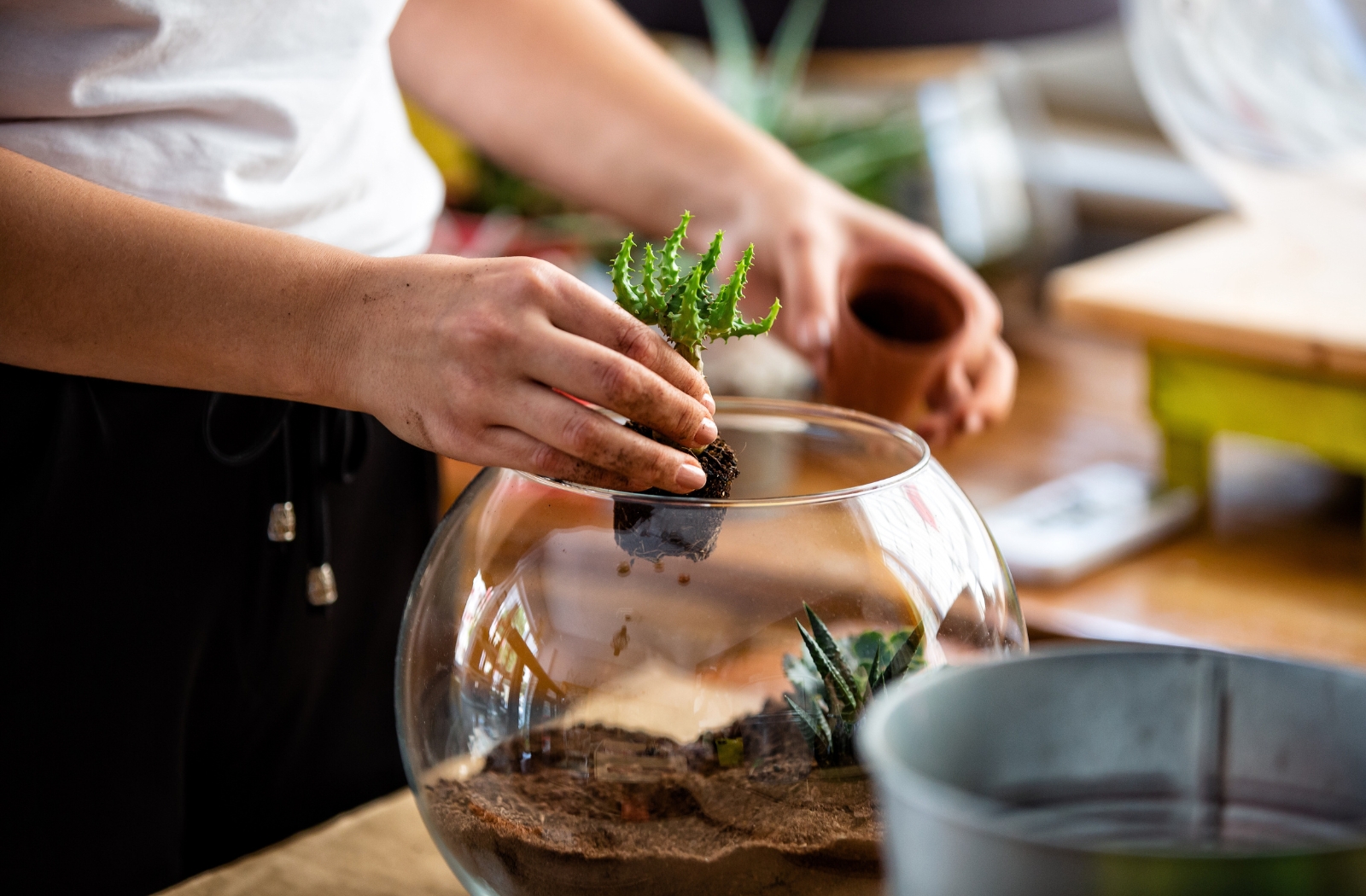A terrarium workshop in Singapore is an interactive event where participants learn how to create their own miniature gardens in a closed container, such as a glass jar or vase. These workshops typically include a brief introduction to the history and benefits of terrariums, a demonstration on how to construct a terrarium, and hands-on instruction for participants to create their own unique terrarium. The goal of a terrarium workshop is to educate and inspire individuals to create their own sustainable miniature ecosystems, while also providing a fun and creative experience.
Participants will also have the opportunity to ask any questions they may have and share their own creations. We encourage participants to take pictures of their terrariums and share them on social media using the hashtag #TerrariumWorkshop.
Materials and Preparation
Before the terrarium workshop in Singapore, participants will need to gather the materials needed to create their terrarium. The materials required are:
- A clear container (jar, bowl, lightbulb, etc.)
- Small pebbles or gravel
- Activated charcoal (can be found at pet stores or online)
- Potting soil
- Small plants (succulents or cacti work well)
- Optional: moss, figurines, or other decorative elements
It’s important to make sure that the container is clean and free of any dirt or debris before starting the workshop. This will ensure that the terrarium stays healthy and the plants thrive.
Activated charcoal is a must-have when creating a terrarium, it helps to purify the air and absorb excess moisture. It’s a small investment that can make a big difference in the health of your terrarium.
Participants are also encouraged to bring their own decorative elements to personalize their terrariums. They can be fun and creative with the design of their terrariums. Adding moss or figurines can give the terrarium a unique look.
Building the Terrarium
Once the materials have been gathered and prepared, it’s time to start building the terrarium. The process is relatively simple and can be broken down into a few easy steps.
Step 1: Add a layer of pebbles or gravel to the bottom of the container. This will act as drainage for the plants and help to keep the soil from becoming waterlogged.
Step 2: Add a layer of activated charcoal on top of the pebbles or gravel. This will help to purify the air and absorb excess moisture.
Step 3: Add a layer of potting soil on top of the activated charcoal. The soil should be deep enough to allow the plants to be planted at the same level they were in their original container.
Step 4: Plant the small plants in the soil, making sure to leave enough space between them to allow for growth.
Step 5: Add any decorative elements such as moss or figurines.
Step 6: Water the plants lightly, making sure not to over-water.
It’s important to note that closed terrariums don’t need much watering since they are closed, while open terrariums require more watering.
Caring for Your Terrarium
Creating a terrarium is just the first step, it’s also important to know how to care for it properly. Proper care will ensure that the plants thrive and the terrarium remains healthy.
Lighting
Most plants used in terrariums prefer bright, indirect light. A location near a window with filtered light is ideal.
Watering
It’s important to not over-water your terrarium. Closed terrariums don’t require much watering, as the plants will get the moisture they need from the humidity inside the container. Open terrariums, on the other hand, require more frequent watering. You should check the soil’s moisture level before watering, if it is dry then water it.
Temperature
Most plants used in terrariums prefer temperatures between 60-70 degrees Fahrenheit. Avoid placing your terrarium in direct sunlight or near heat sources.
Humidity
Closed terrariums have high humidity levels, while open terrariums have lower humidity. Make sure to keep the plants at their preferred humidity level.
Pest control
Keep an eye out for pests such as spider mites or mealybugs, and take action if you notice any.
It’s also important to note that terrariums don’t last forever. The plants will eventually outgrow the container, and the soil will need to be replenished. When this happens, it’s time to start the process over again.
Conclusion
In conclusion, the terrarium workshop in Singapore was a fun and educational experience for all participants. Not only did we learn about the different types of plants that can thrive in a closed environment, but we also got to explore our creativity by designing and building our own unique terrariums. The hands-on approach to learning and the expert guidance provided by the instructor made for a memorable and enjoyable experience. Overall, the terrarium workshop was a great opportunity to learn about the beauty and benefits of indoor gardening, and it left us all with a newfound appreciation for the delicate balance of nature.

